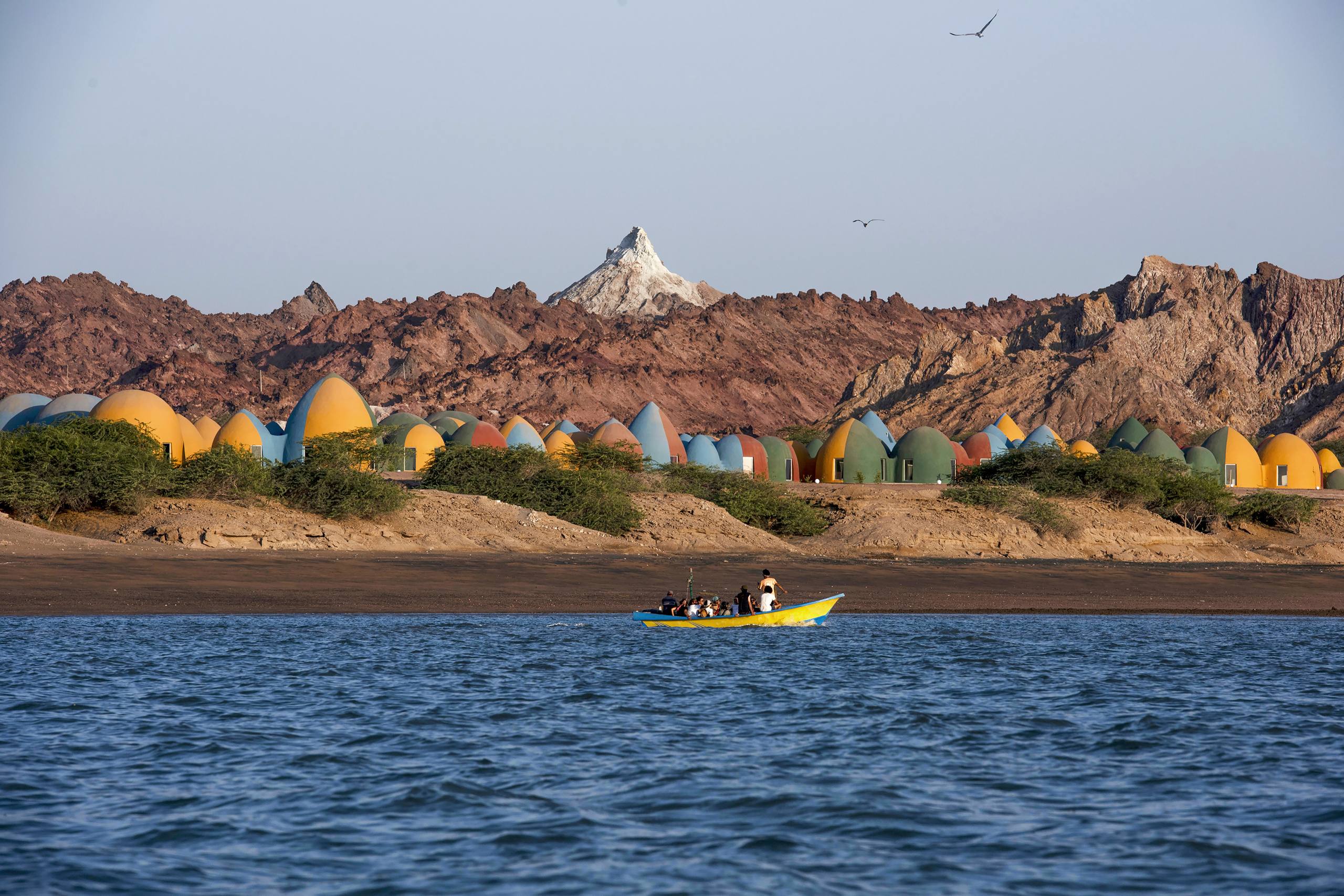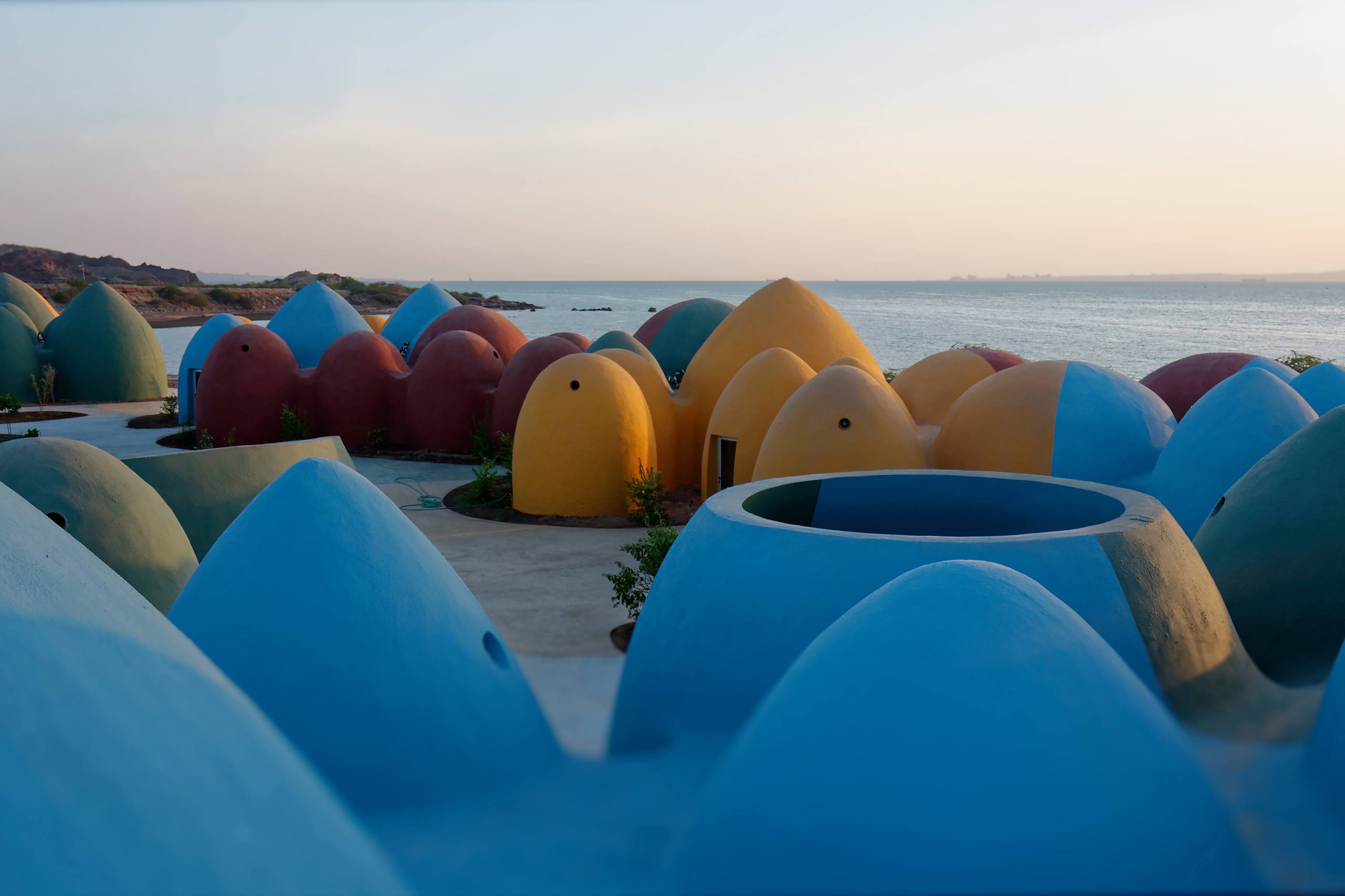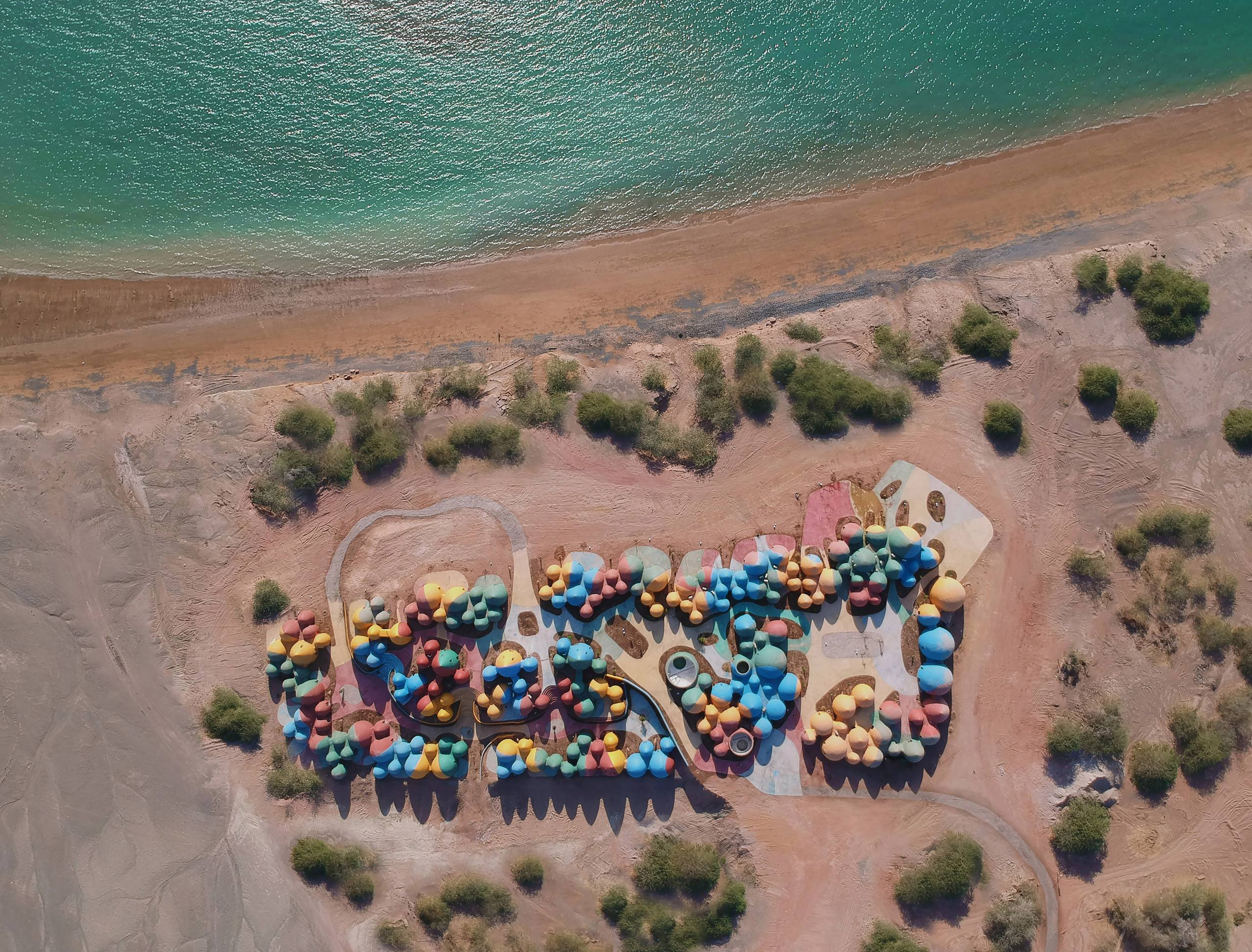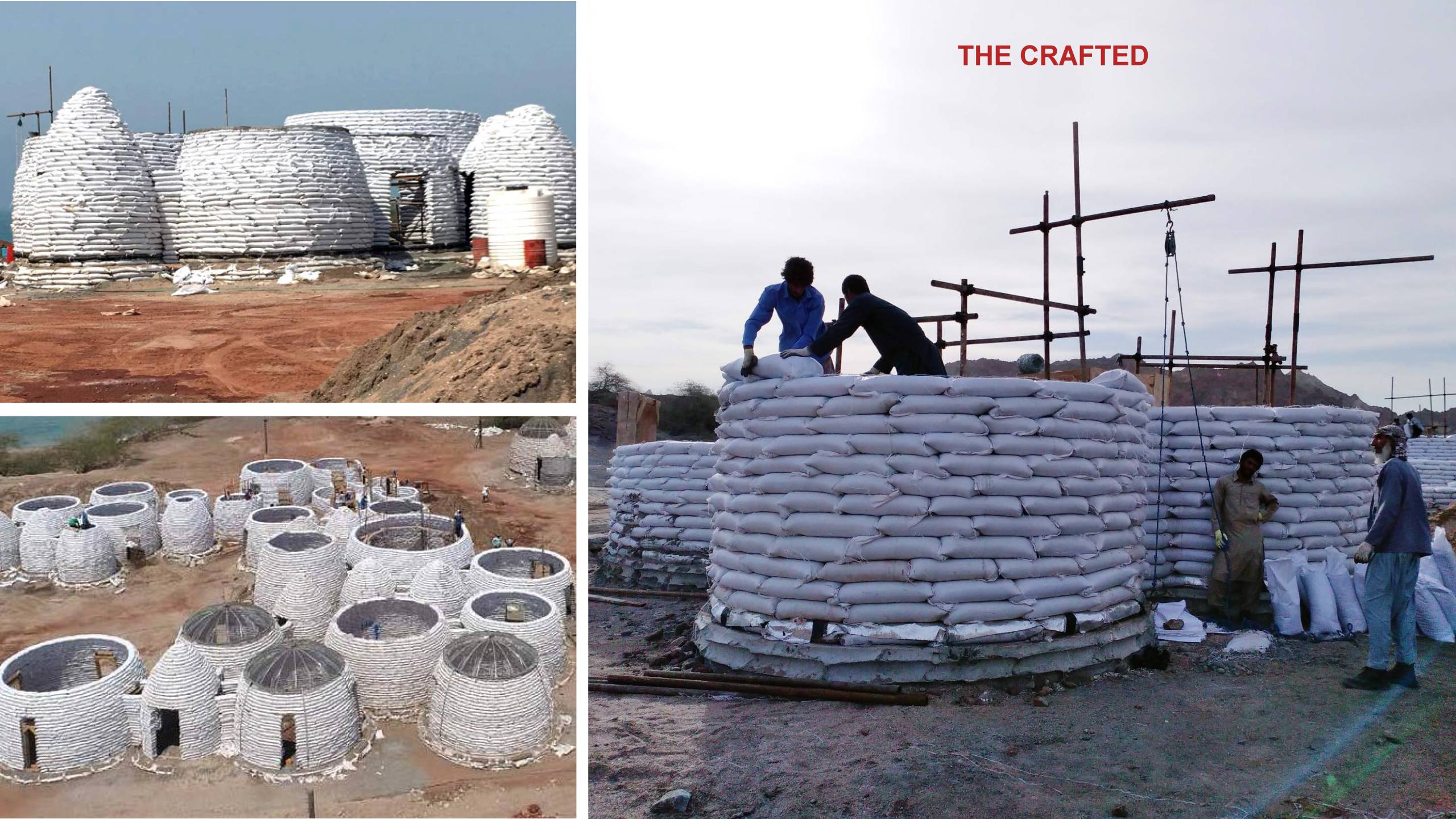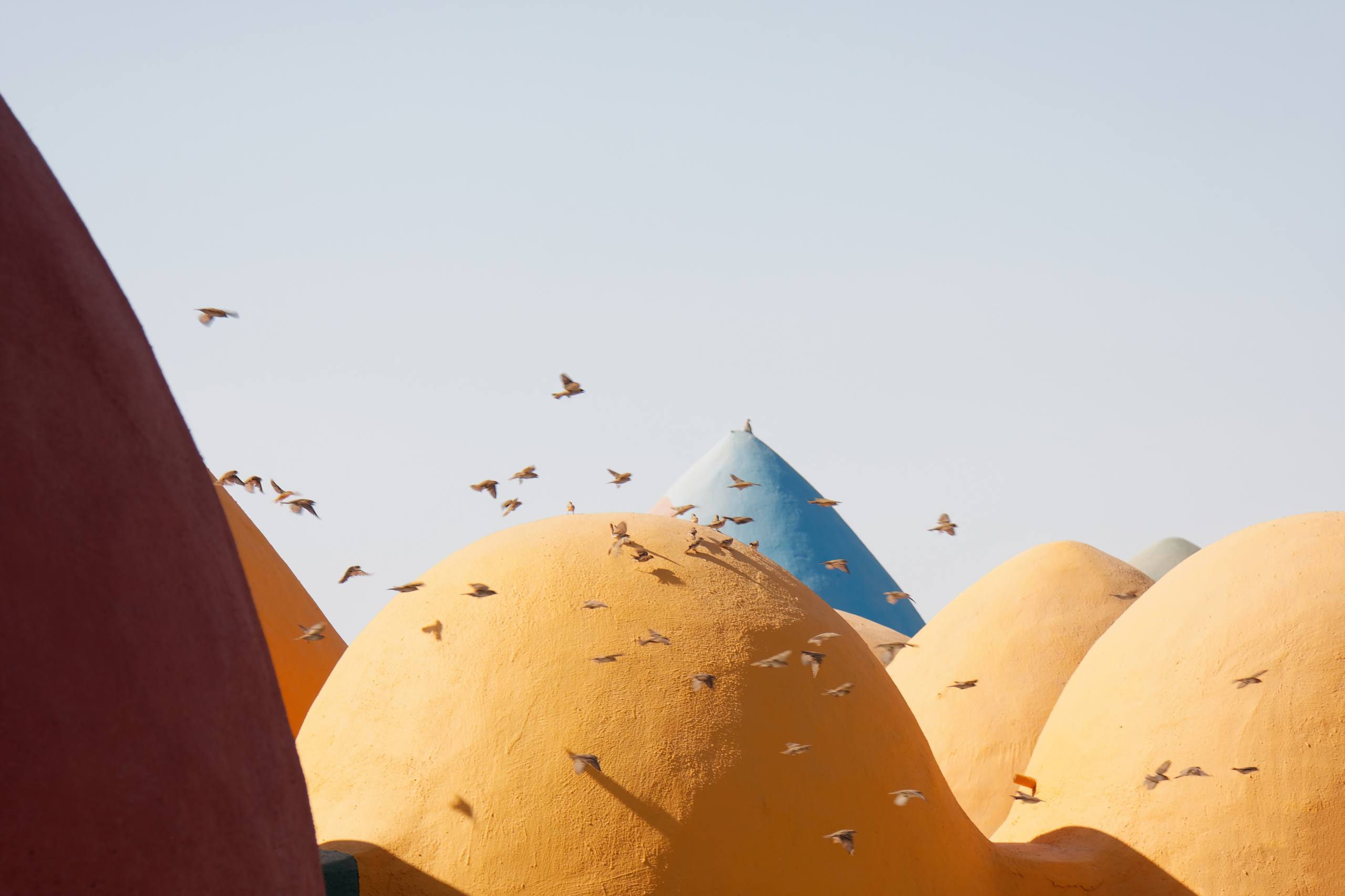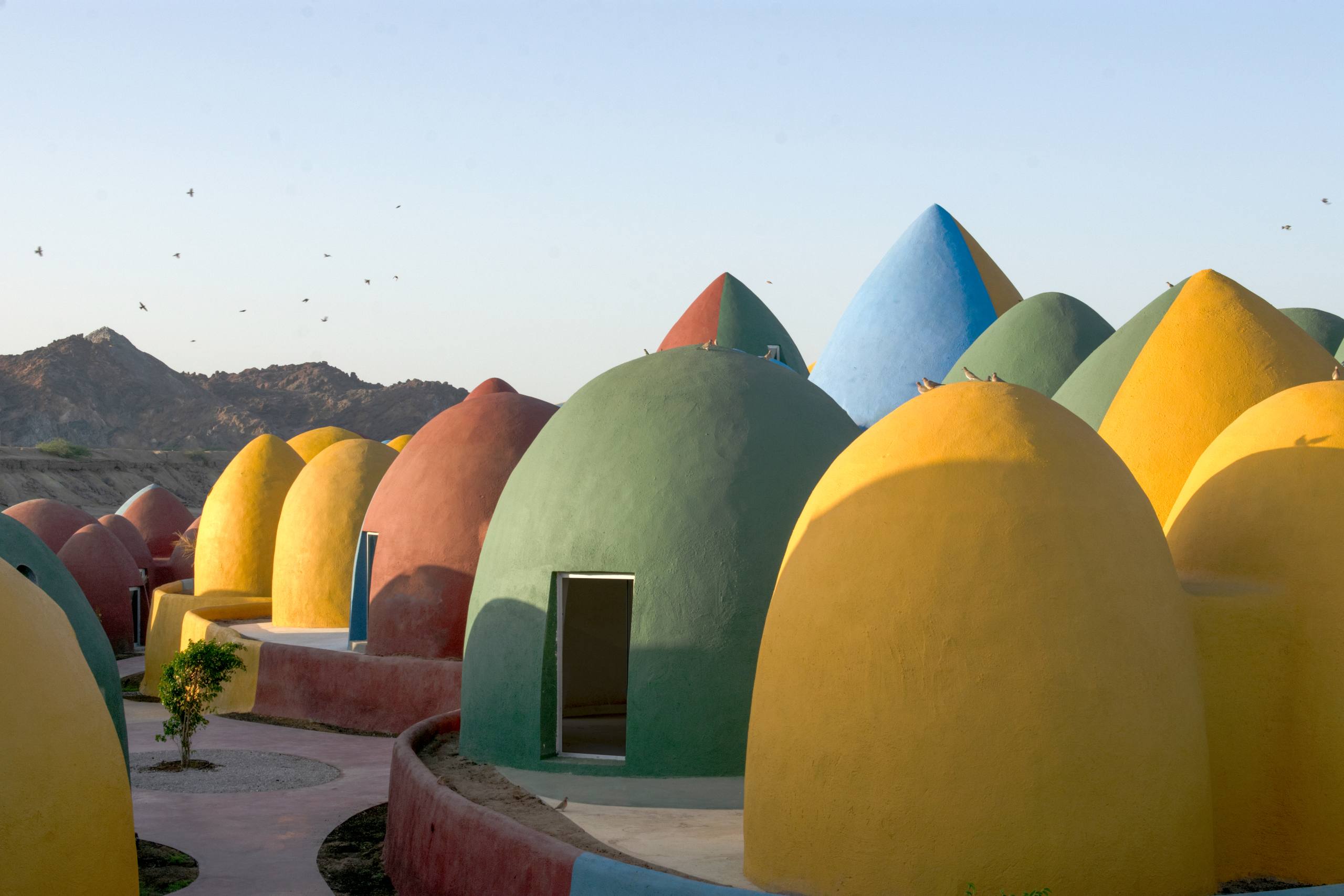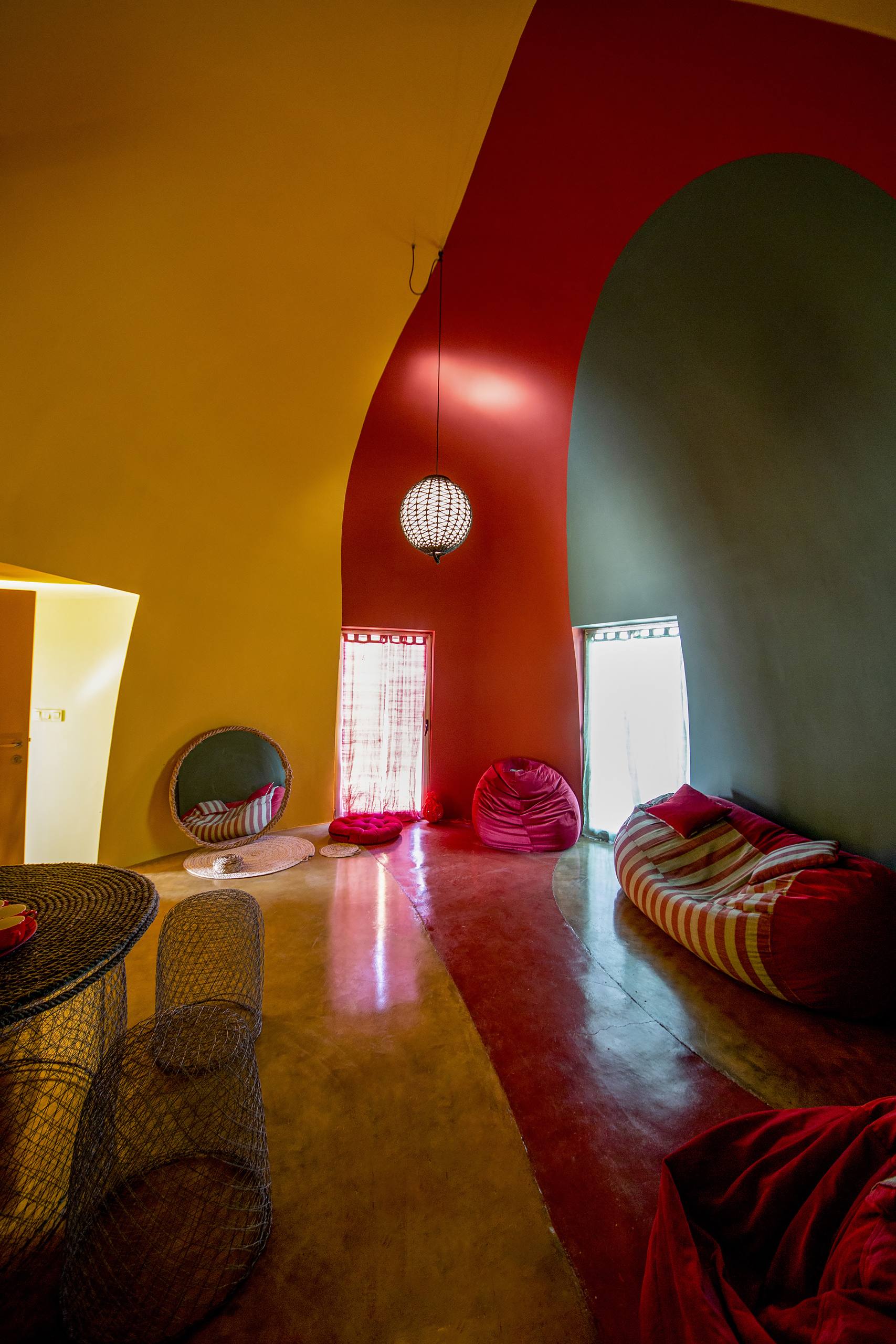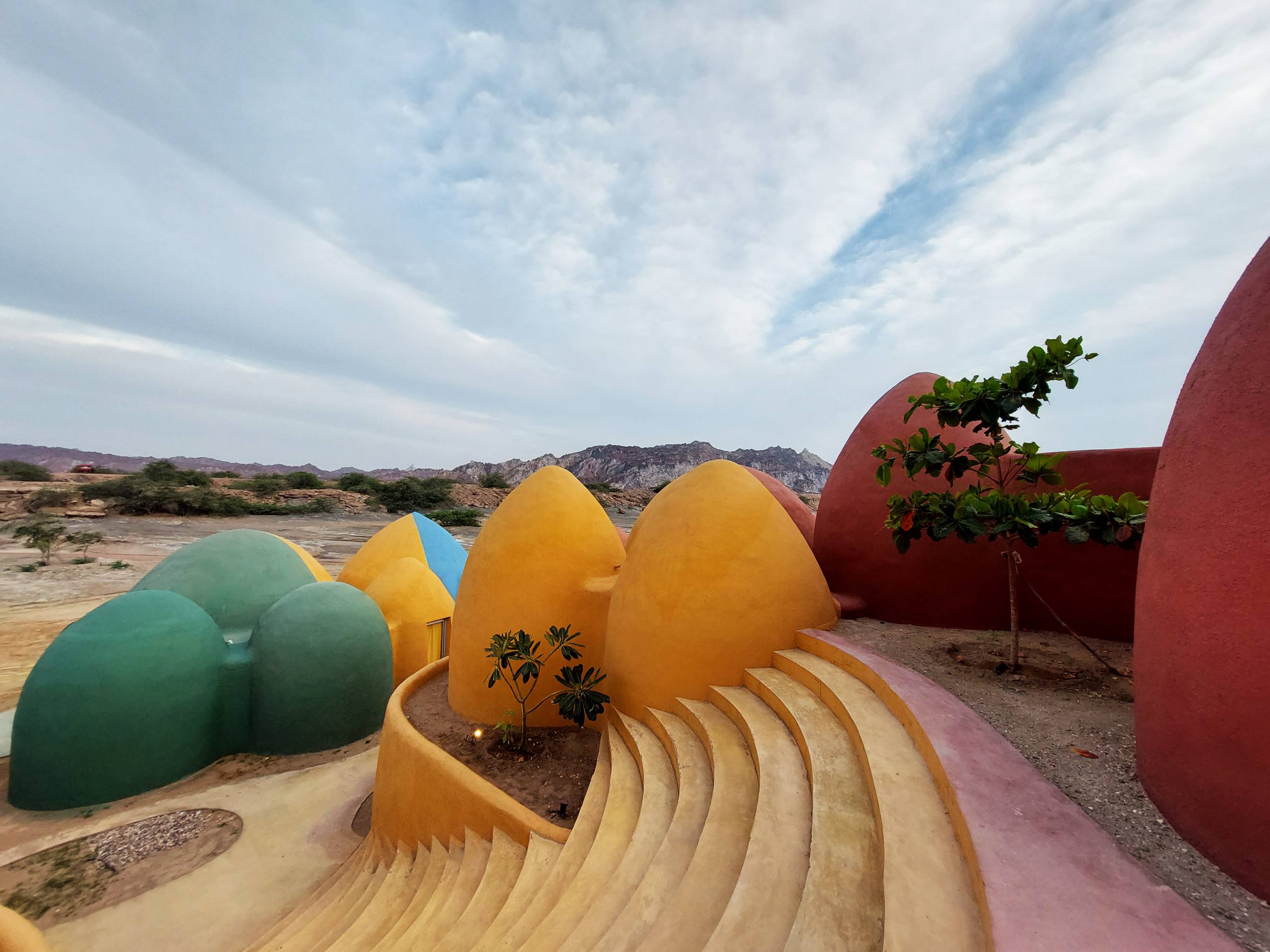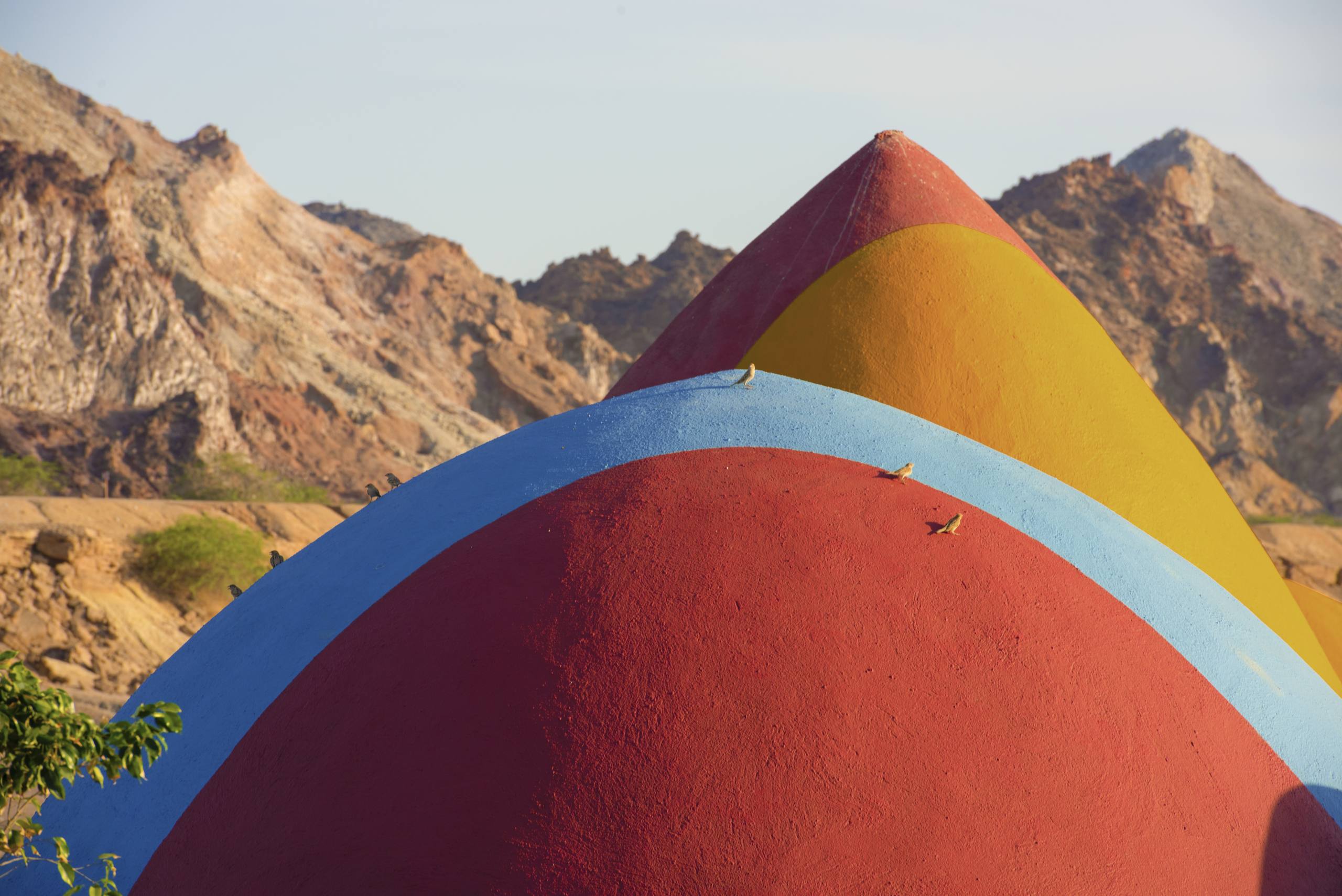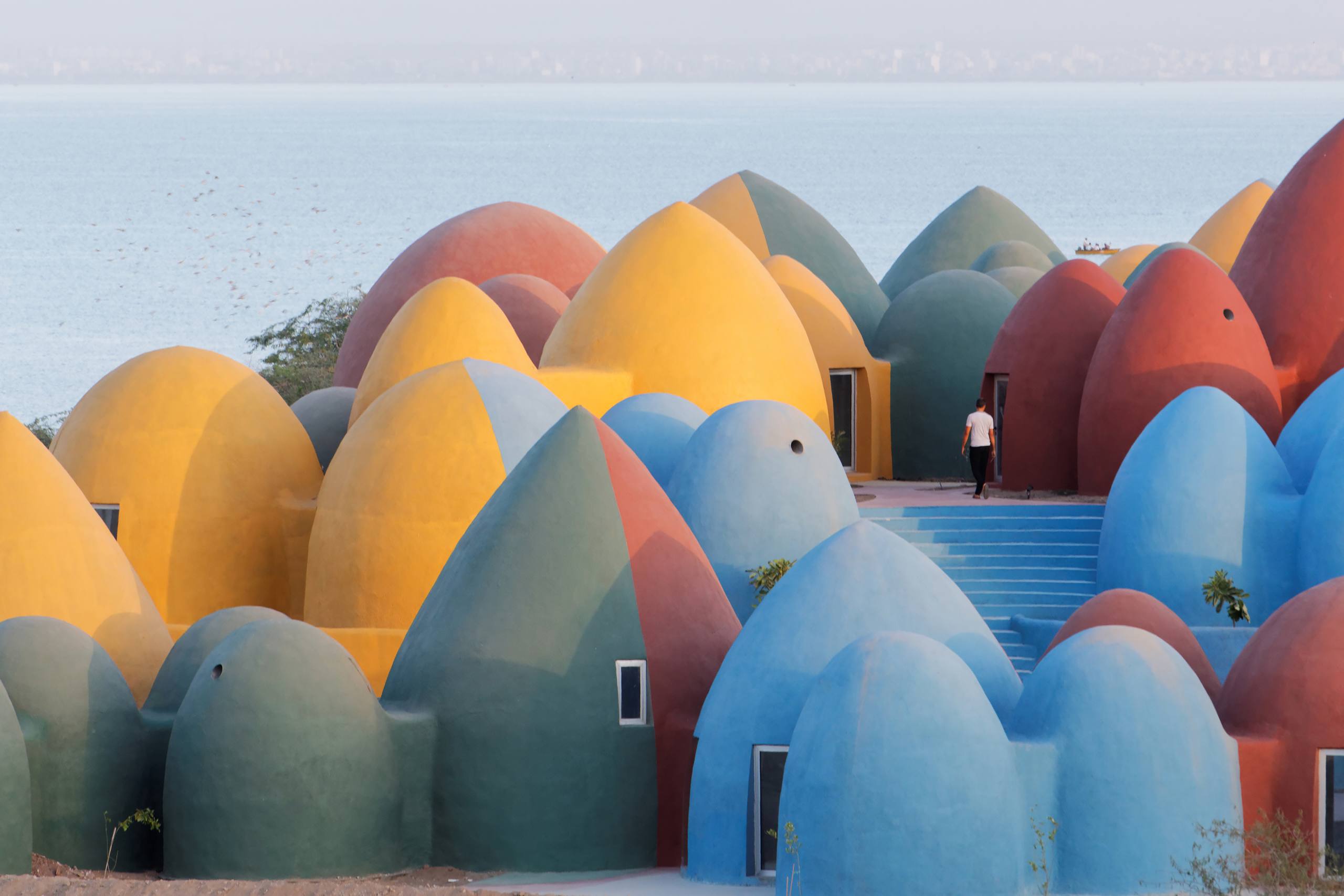Presence in Hormuz 2 (Majara Residence)/
ZAV Architects
Project Details

Location(City/Country):
Hormuz Island / Iran, Islamic Republic of
Tipology:
Residential
Year (Design/Construction):
- / 2020
Area (Net/Gross):
4000 m2 / 10300 m2
Operational Carbon emissions (B6) kgCO2e/m2/y:
-
Embodied Carbon emissions (A1-A3) kgCO2e/m2:
-- Domes made of earth, including their foundations, inspired in the local traditional and vernacular architecture.
- Use of local and natural resources resulting in an extra low carbon emissions buildings.
- The low-tech building method increases the share of human labor over expensive imported materials. 40 unskilled workers became skilled and empowered in this project.
Presence in Hormuz is a series of projects located on the island of Hormuz, south of Iran in the Persian Gulf. These projects aim to activate certain points on the island to create a bigger impact and to expand the field of operation of architecture beyond the built environment. Majara Residence, or Presence in Hormuz 2, offers an alternative architectural aesthetic in this marginal region of Iran. By pushing the limits of inner tools of architecture, it seeks opportunities in giving agency to the “planet” by making the earth and geography a point of departure for rethinking architecture and to the “people” and the public realm through processes of design, construction, and implementation.
Majara Residence is a gateless neighborhood, a conglomeration of dome structures hosting both accommodations for tourists and public usages open to all, located 5 kilometers away from the city of Hormuz. It has an area of 10300 square meters, with 6300 square meters of open space and 4000 square meters of built area. It consists of 200 earth domes with an organic spatial organization, which have the capacity to contain a variety of programs. 130 domes host 17 suites with a maximum capacity to host 75 guests while the remaining domes house open-to-all uses, and the architectural scenario lets the public realm in.
The domes are made of earth from their foundation to the walls, as if the earth has swollen to provide space for accommodation. The low-tech building method of the projects which is superadobe tends to increase the share of human labor over expensive imported materials. In total, 40 unskilled workers became skilled and empowered in this project, while the constructed elements bear the trace of their crafts.
Hormuz Island’s most famous characteristic is its colorful mountains made of soil containing various minerals. Small particles of sand, gravel, stone and rock, with different sizes and colors, come together to shape the charismatic landscapes of the island.
Following this idea, the geography of Hormuz has been given agency to impact the architectural proposal that focuses on the idea of hyper-connectedness of architecture to its geo-context in various scales.
When we look at the immediate natural backdrop of the project, we encounter a porous green fabric consisting of native species of trees. The configuration of the project is very much informed by this natural field condition. The erected architecture is a field of spatial possibilities, porous enough to contain the natural flows of flora and fauna.
This architectural field is envisioned as a neighborhood of programs. Public facilities and amenities structured around a central public plaza and organized around a triad of staircases with the accommodation units on a graded base that its different levels are accessed by the stair sets. Inspired by the texture and granularity of the soil on the island, the colonies of the constructed portions of this neighborhoodlike field, are architecturally imagined as aggregated collectivity of spatial molecules. The archetype (Genome) of this molecular configuration is inspired by a local tradition of construction within the region called “Bork.e” The project is established out of a variegated taxonomy of molecular structures; it is as if they are recreating a constructed replica of the geographical skyline.
The formal connection of the architectural proposal is further enhanced through the use of a color pallet that is tuned with the colorful context. The application of this polychromic pallet to the raw morphology of domes is as if the fourfold of colors are poured on an initial volumetric canvass. The architectural forms absorb the color while the in between land doesn’t, one would say the whole volume of the complex is now trimmed by this very simple law of nature.
Now, a hybrid condition is at hand where the boundaries of the forms are not identifiable anymore, since colored domes transform to volumetric colored patches. The hybrid regime that creates this semi-fantom forms, can be analyzed in section: imagine that a viscous sticky and live liquid sets off to conquer our form from the openings, while the colorful liquid finds its way in to the interior of our form, it is also defeating the exterior surface.
The result of the process is a polychromic gateless neighborhood containing public activities built by the hands of the Hormuzi people.
- Photo credits: Tahmineh Monzavi, Soroush Majidi, Payman Barkhordari
DESIGN TEAM
- Lead Architects: Mohamadreza Ghodousi, Fatemeh Rezaei, Golnaz Bahrami, Soroush Majidi
- Design Assistants: Sheila Ehsaei,Sara Jafari, Payman Barkhordari, Mohsen Safshekan, Kaveh Rashidzadeh, Hossein Panjehpour
- Landscape: Maryam Yousefi, Morteza Adib
- Interior Design: Sara Jafari, Taraneh Behboud, Sara Nikkar, Mohsen Dehghan
- Light Consultant: Tajang Light
- Supervision: Soroush Majidi, Payman Barkhordari, Sheila Ehsaei
- Modeling: Somayeh Saeidi
- Presentation: Fereshteh Assadzadeh, Somayeh Saeidi, Arshia Hashemipour, Dorsa Tavakoli, Sara Fallahzadeh
CLIENTS
- Owner: Ali Rezvani
- Client: Ehsan Rasoulof
- Structural Design: Behrang Baniadam, Rouhi Touski
- Civil Engineering: Farhad Beigi
- Electrical Engineering: Pejman Moradian
- Mechanical Engineering: Saeid Afsharian
- Culinary Manufacturer: Matbakh Ara
- Environment Consultant: Salman Rasouli, Roya Yazdizadeh
- Accommodation Consultant: Nasim Mosavar
CONSTRUCTION TEAM
- Project Constructor: Amir Tehrani Nobahari
- Construction manager: Hormat Ghasemi
- Construction vice-manager: Ramin Koulaghani, Amin Timas
- Mechanical constructor: Javad Irandegani, Hamid Haji Posht-e-Gol
- Floor constructor: Davoud Etemadi
- Fenestration builder: Mehra Company
- Interior plaster: Gholamali Abbasi
- Exterior plaster: Esmaeil Salimi
- Construction painter: Farzad Moharami
- Logistics: Nabiollah Timas, Borhan Pouyan, Ali Ghanbari, Ayoub Owj Hormozi, Khalil Owj Hormozi, Abdolhamid Hormozi, Davoud Hormozi, Ali Ghalandari Zehi, Farhad Shadan, Assad Gedri, Abbas Gedri, Ali Ghazi, Majid Bazmandeh, Ali Nasernia, Rahmat Ghalandari, Davoud Mohtaji, Morteza Mohtaji, Mohammad Vahedi, Mosayeb Zarei, Kambiz Naroui, Yasser Naroui, Nassir Narouii, Din Mohammad Naroui, Mojtaba Farhadi, Abbas Nasaji, Esfandiar Khorshidi, Khoubyar Khorshidi, Jalal Bameri, Ghassem Bameri, Enayat Karami, Reza Amirian, Eshgh Ali, Nabi Akrami, Mohammad Moallemi, Sajad Gholampour, Seyfollah Rasouli, Ali Golzari, Soheil Khedmatkari, Hosein Zohouri.
